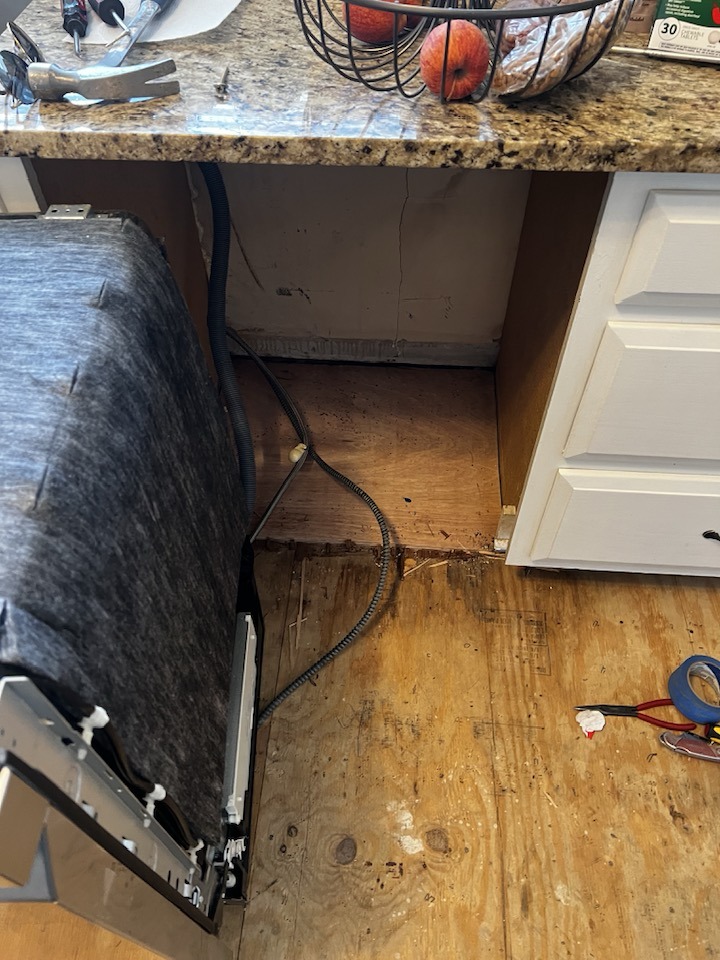I have direct experience with the devastation that water damage can do to homes and properties because I manage a water damage restoration business. If water damage is not dealt with right away, it can result in expensive repairs, structural difficulties, and even health hazards. On the other hand, homeowners can drastically lower the chance of water damage by taking a few precautionary steps. The most frequent sources of water damage will be covered in this article, along with helpful advice on how to safeguard your house.
Typical Reasons for Water Damage
1. Roof leaks
One of the main causes of water damage is roof leaks. Shingle deterioration and weather-related risks might occur in your roof over time. Regular inspections and maintenance are crucial to ensure your roof remains in good condition.
2. Burst Pipes: Age, poor installation, and freezing weather can all cause pipes to rupture. In just a few minutes, a broken pipe can flood your house, seriously damaging your walls, flooring, and personal items.
3. Improper Drainage – Water buildup and seepage into your foundation can result from improper drainage surrounding your house. This may result in structural problems, mold growth, and fissures.
4. Defective Appliances: Water leaks can occur from the malfunction of appliances including water heaters, dishwashers, and washing machines. Such disasters can be avoided by performing routine maintenance and replacing outdated appliances on schedule.
5. Clogged Gutters: The purpose of gutters is to divert rainfall away from your house. Water can overflow and harm your roof and walls when they get clogged with leaves, debris, and dirt.
Practical Advice for Avoiding Water Damage
1. Regular Roof Inspections: Check your roof on a regular basis, particularly following inclement weather. Check for missing or broken shingles, and make sure the flashing and sealant surrounding vents and chimneys are in place. Engage a qualified roofer to handle any problems you find and make the required repairs.
2. Insulate Your Pipes: To keep your home’s unheated regions, including the garage, basement, and attic, from freezing during the winter, insulate the pipes in these locations. In order to protect pipes from freezing, you need also maintain a temperature in your house above 55°F even when you are gone.
3. Improve Drainage: To stop water from collecting around your house, make sure the earth slopes away from the foundation. Consider installing a French drain system to direct water away from your home effectively. Regularly inspect and clean your gutters and downspouts to ensure they are free of debris and functioning properly.
4. Maintain Appliances: Give water-using appliances a regular inspection and maintenance. Inspect hoses and connectors for indications of deterioration and repair them as needed. A water leak monitoring system that can notify you of possible leaks and turn off the water supply automatically is something you should think about installing.
5. Install a Sump Pump: If you have a basement or live in a region that floods frequently, you should think about installing a sump pump. To avoid flooding in the basement, a sump pump can help remove water that gathers there. Make sure the sump pump has a backup power supply and is tested on a regular basis.
6. Seal Windows and Doors: Inspect the window and door seals for any fractures or openings that can permit water to sneak in. To stop water from leaking in, cover any gaps with weather stripping or caulk.
7. Watch Your Water Bill – Keep an eye out for any unforeseen hikes in your water bill. An unexpected increase in water use can point to a concealed leak. To stop additional harm, look into any leaks you detect right away.
8. Install Water Detection Devices: Place water detection devices next to appliances that use water, like dishwashers, water heaters, and washing machines. By warning you when water is present, these gadgets let you act before serious damage is done.
Checklist for a Regular Home Inspection
Here is a checklist to assist you in keeping track of possible water damage concerns during routine house inspections:
Roof: – Examine the shingles for wear or damage.
Examine the sealant and flashing surrounding vents, skylights, and chimneys.
– Make sure downspouts and gutters are clear and operating correctly.
– Pipes: – Examine exposed pipes for corrosion or leakage.
– Insulate pipes that are not heated.
– Listen for odd sounds or problems with the water pressure.
Foundation: – Look for any fractures or evidence of water seepage.
– Make sure the house has adequate drainage.
– Check for moisture on the floors and walls of the basement.
– Appliances:
– Inspect hoses and connections for wear and tear.
– Regularly maintain and service appliances.
– Install water leak detection devices.
– Windows and Doors:
– Check seals for cracks or gaps.
– Apply caulk or weather stripping as needed.
– General:
– Monitor your water bill for unexpected increases.
– Test sump pump functionality regularly.
– Install and maintain water detection devices.
By following these tips and conducting regular inspections, you can significantly reduce the risk of water damage in your home. For more detailed information on preventing water damage, you can refer to resources ready.gov and FEMA. Taking proactive steps today can save you from costly repairs and potential health hazards in the future.
In case of water damage, it’s crucial to act quickly. Contact a professional water damage restoration company to assess and address the damage promptly. Remember, prevention is the key to protecting your home and ensuring peace of mind.

